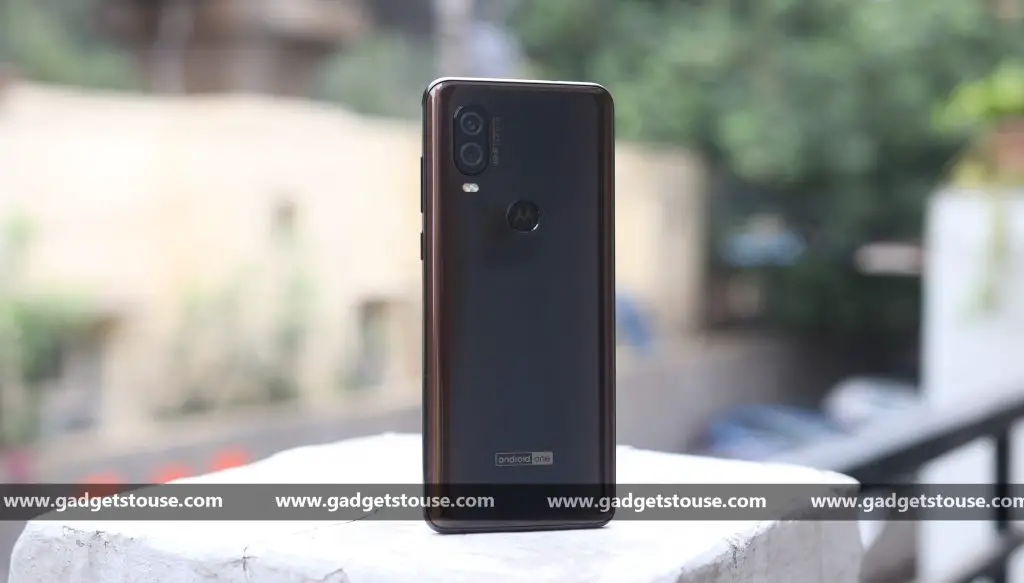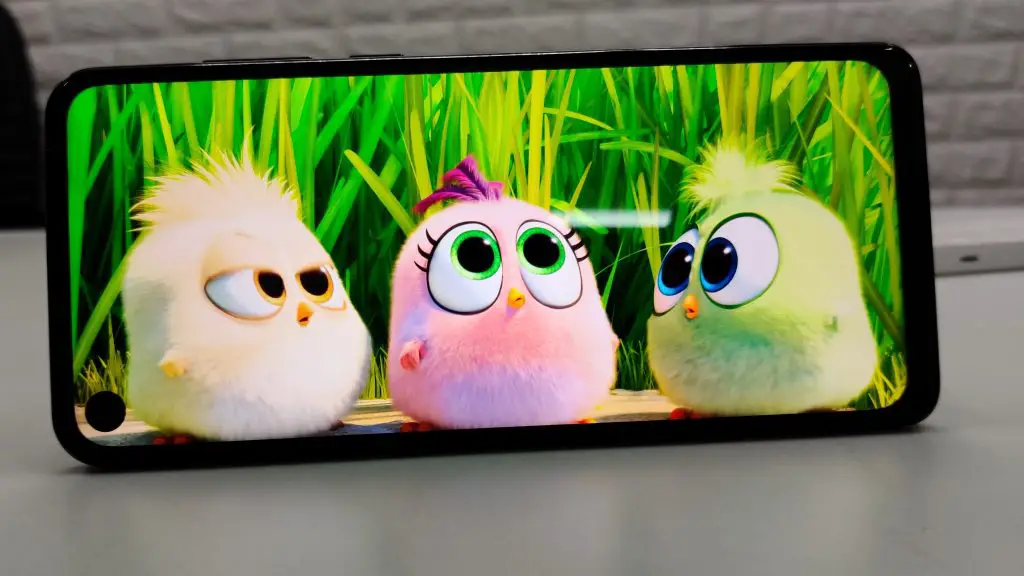Let’s check out its top 5 features that make Motorola One Vision an outstanding smartphone under Rs. 20,000.
Motorola One Vision Features
Attractive Glass Back Design
Motorola One Vision comes with a stylish design. The gradient glass back with a 3D effect is packed into a curved plastic frame. The handset looks premium with its good aesthetics.
The Bronze Gradient model I’ve been using looks quite unique in the world of white, grey, blue and black colored phones. I’m not so sure about the sapphire blue model of this phone, but that too looks equally impressive in pictures. On the rear panel, the Motorola One Vision has a fingerprint sensor that sits inside the Motorola logo. Additionally, the rear panel is made from Gorilla Glass.
Motorola has followed Sony’s path of using a 21:9 aspect ratio screen on smartphones, and this makes the One Vision taller than others with similar 6.3-inch size display. However, its slim build still makes it easier to hold in one hand. Overall, in terms of design, Motorola stands out in the segment with a new gradient glass back and of course, the new 21:9 screen.
Cinema Vision Display
The Motorola One Vision joins the league of Sony phones with 21:9 displays including Xperia 10, 10 Plus, or Xperia 1. Also, this is the only phone currently available in India that embraces the 21:9 aspect ratio. This makes its ‘Cinema Vision’ display much taller than an average smartphone.
The Motorola One Vision isn’t quite as bulky as Sony’s 21:9 phones. However, it still feels thinner to use with just one-hand. Watching content feels strange and intriguing on the latest 21:9 screen, however, there are very few videos that actually have that aspect ratio. In terms of quality, the display is bright despite being an LCD panel. The Motorola One Vision’s display is also crisp and offers satisfying viewing angles even in bright sunlight. The cut-out on the screen doesn’t interfere much when you watch a video or play a game.
Cameras with Quad pixel tech
The Motorola One Vision joins the Redmi Note 7 and others in the mid-range segment that sport a 48MP camera. Just like every other 48MP camera, you will not get 48MP images by default. Motorola uses pixel binning (calls it ‘Qual Pixel Tech’) to combine four pixels into a single, large 1.6μm pixel that results in 12MP shots. This leads to detailed images as well as improved performance in low light. Talking about lowlight performance, the One Vision comes with f/1.7 aperture lens in the rear camera that also offers the best in class low light photography. Moreover, it has a dedicated night mode called, Night vision that even offers better results than smartphones which are priced in the premium segment. Overall, Motorola One Vision is capable of clicking good photos, especially in daylight conditions. The details are great and the colors are also accurate. The portrait mode blurs the background nicely in different levels and edging is also good. The One Vision can record in up to 4K at 30fps but if you drop it down to 1080p (60fps), it also offers OIS. This also makes it one of the few phones to have OIS in this price segment. Quad Pixel also plays its part for the selfie camera as well. The 25MP camera clicks 6MP images with great details. The One Vision’s selfies are packed with details and accurate colors. Also, there are plenty of beauty and other modes to add fun.
Solid Performance
For the first time, Motorola has used a Samsung SoC, ditching the Qualcomm ones. The 10nm Exynos 9609 is an octa-core chipset that hasn’t been seen on any Samsung phone yet. However, it stands close to the Exynos 9610 used in Galaxy A50.
In terms of performance, the Motorola One Vision is impressive. Multitasking is smooth as there’s hardly any lag while switching between the apps. It handles heavy games like PUBG Mobile without any minute problem like a lag. The device also does not become unbearably hot after an extensive gaming session. The Antutu benchmark score is also at par with other phones in this segment.
To add to the Motorola One Vision’s performance is its 3,500mAhbattery, that also offers distinctly average battery life i.e. a day. Additionally, you can refuel it pretty quickly thanks to Motorola’s 15W TurboPower charger in the box.
Clean UI with Android One
The Motorola One Vision runs on Android 9 Pie out of the box and it’s also an Android One phone. So, it is certain that the One Vision will be upgraded to Android Q and R and it will receive security updates for two years as well. As we see in other Motorola phones, the UI is clean and bloatware-free. The stock Android software is also responsible for its impressive performance. All of the default apps except the camera are the Google apps. There are only a couple of extra apps like Dolby Audio, FM Radio that come pre-installed. Also, the other notable addition to the Android One phone apps is “Moto” category apps.
Wrapping Up
The Motorola One Vision is priced at Rs. 19,999 in India. Motorola is offering a single configuration with 128GB expandable storage and 4GB RAM which is also good at this price point. At Rs. 20,000, you get the unique 21:9 display, solid build, clean UI, decent camera performance, especially in lowlights as well as powerful hardware that is capable of hardcore gaming. I think this could be the best deal that every smartphone enthusiast can expect in the mid-range price segment. Meanwhile, Motorola is planning to launch another phone in its One series in India on August 23- Motorola One Action. You can watch the Motorola One Action launch event live by heading to the following link. https://youtu.be/sE2f0LfaN_I The phone has already been launched in some global markets last week and now it is coming to India. It has mostly similar specs to the Motorola One Vision, except for the camera.



